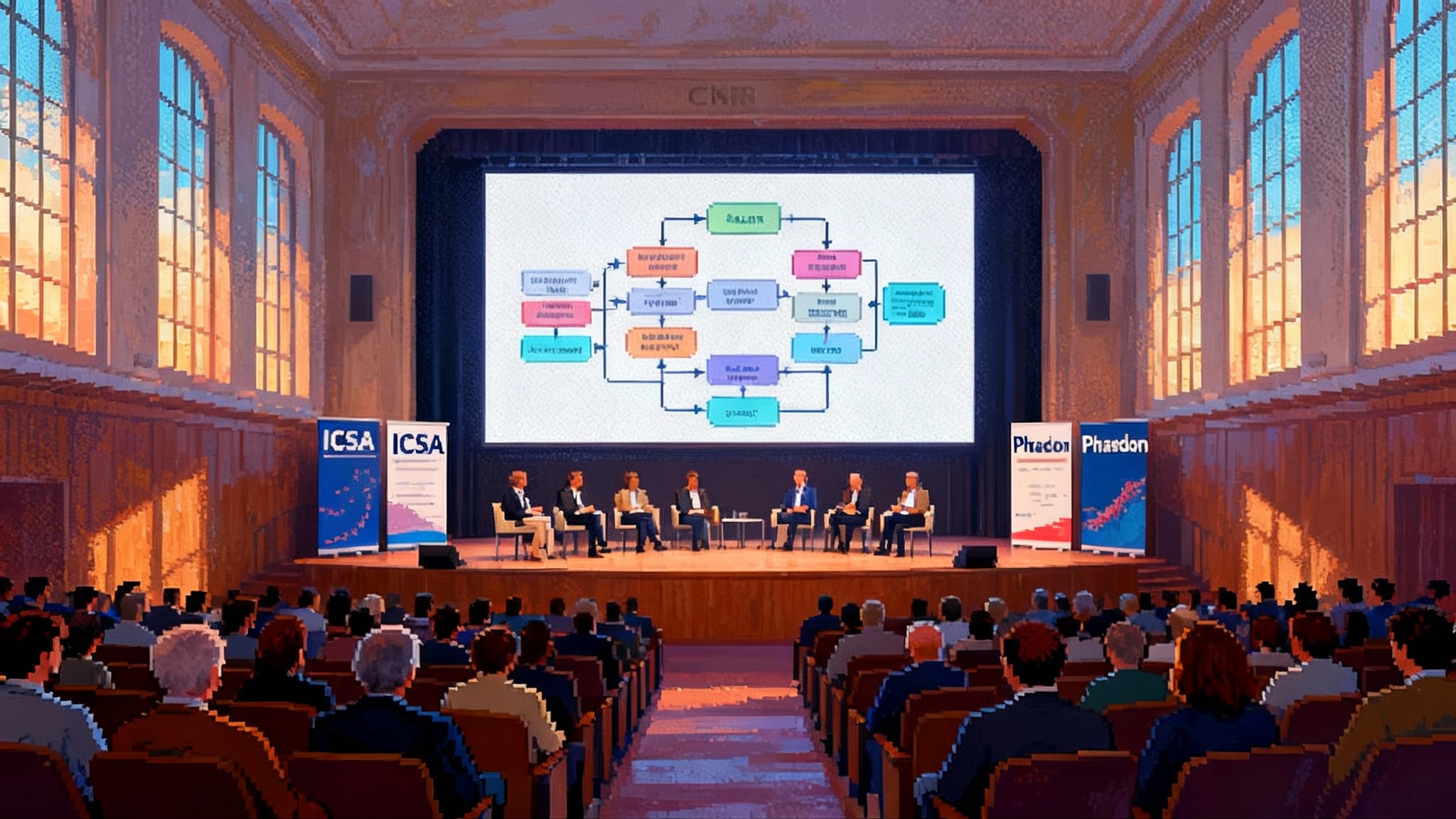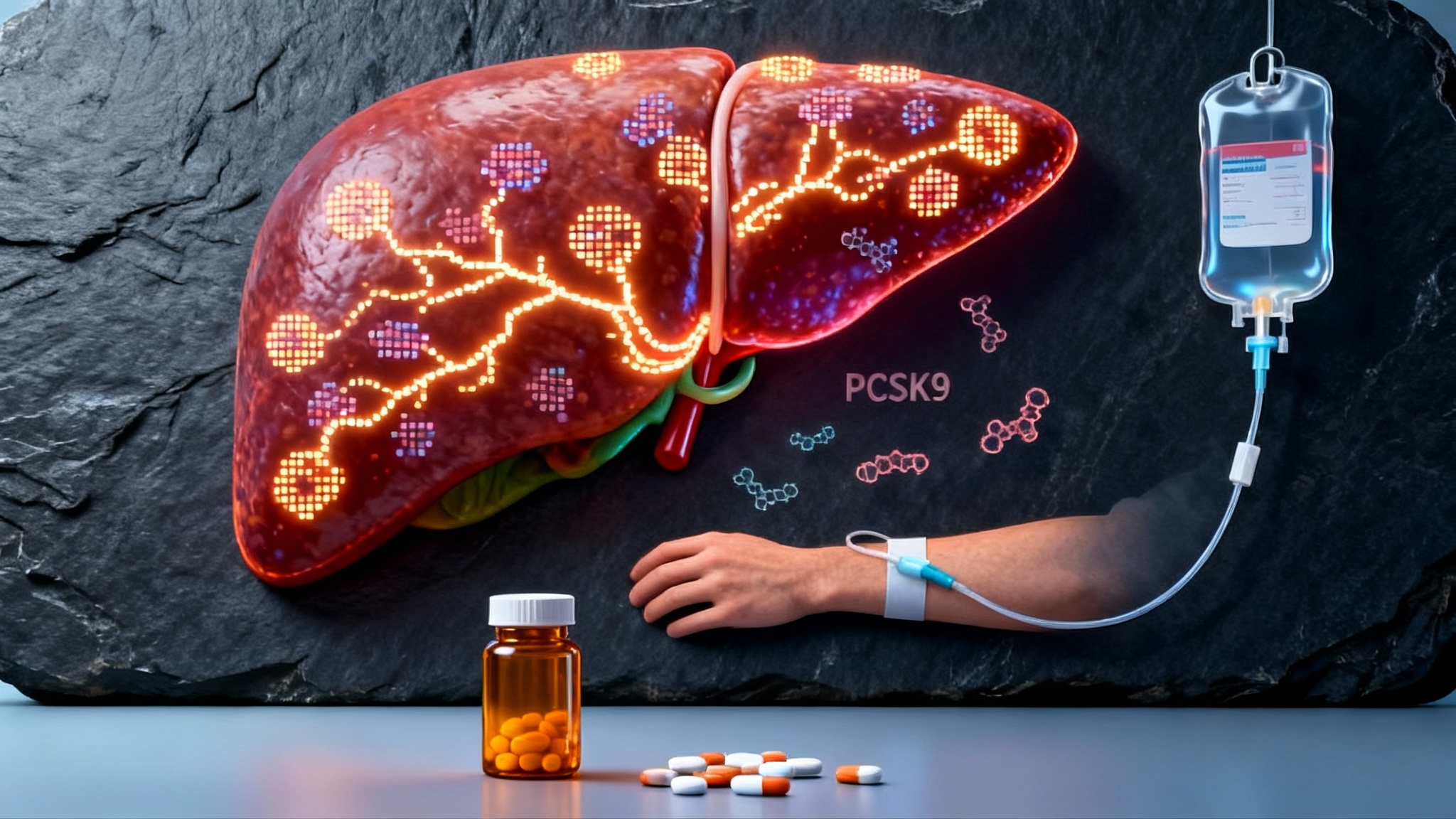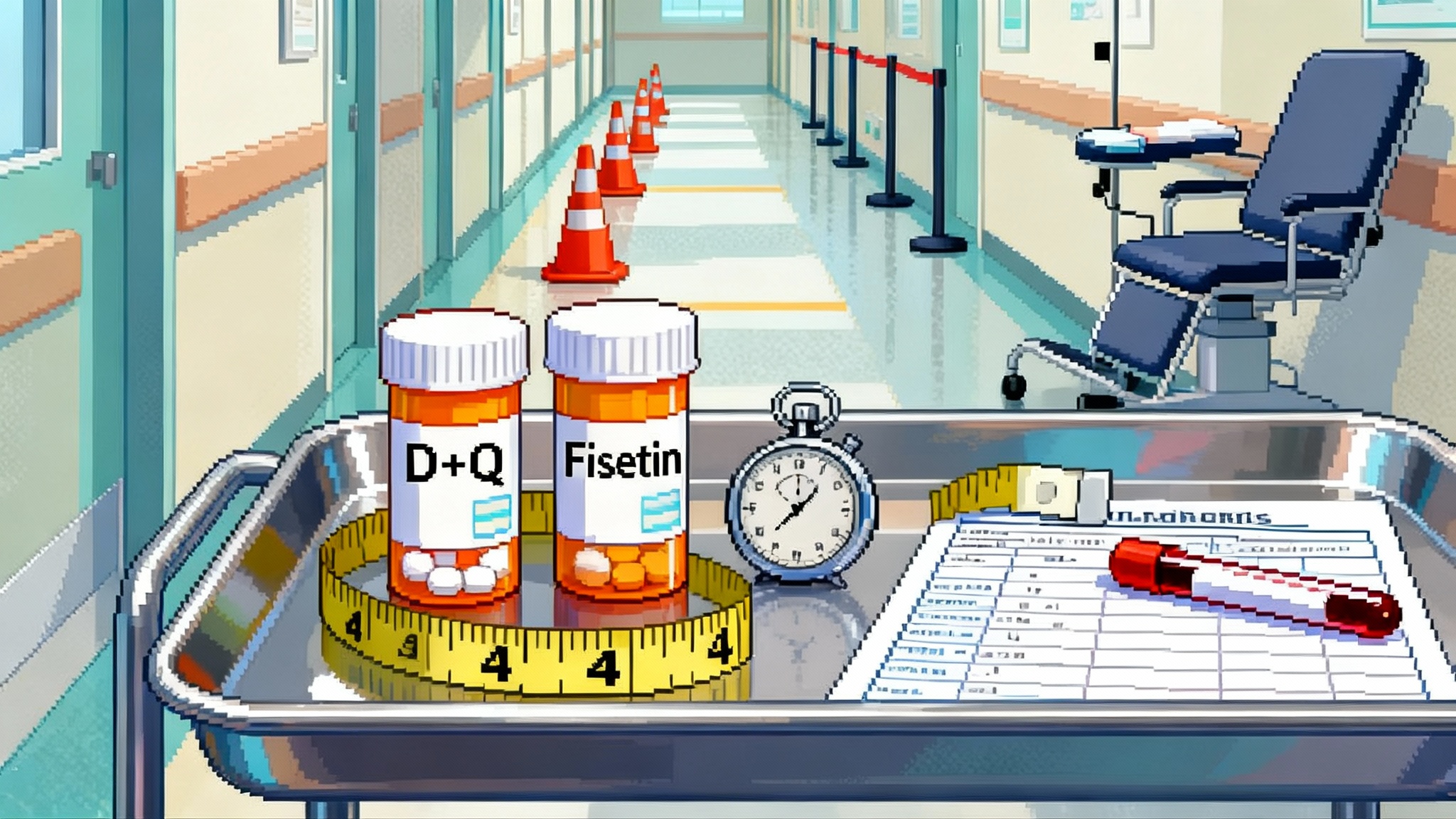Rome 2025: Senolytics Move From Hype to Clinical Plans
Post-event analysis of the September 16 to 19, 2025 ICSA and Phaedon Senotherapeutics Summit in Rome. New human data, clearer biomarker roadmaps, and a push for assay harmonization point to how senolytics could reach the clinic in the next 12 to 24 months.

The signal from Rome
Four days in mid September at Italy's National Research Council felt like a turning point. The ICSA and Phaedon Senotherapeutics Summit, paired with the 10th Annual ICSA meeting, brought together academic leaders, biotech teams, and would-be regulators around one question: what will it take to turn senolytics from elegant mouse stories into drug grade therapeutics for people, soon.
The headline is not that senolytics suddenly work. It is that the field is converging on what must be proven, how to measure it, and how to keep the body of evidence ahead of a fast growing consumer market. Three themes crystallized that will shape the next 12 to 24 months:
- Early human signals in high need groups. Intermittent dasatinib plus quercetin in early Alzheimer’s is advancing with a plan for target engagement and safety, including CSF measures and neurovascular readouts. See the Mayo Clinic ALSENLITE trial for aims and timelines.
- A pre competitive push to harmonize assays. Teams are aligning on shared reference samples, a core assay stack, and an open channel to regulators on endpoints.
- The supplement market is sprinting ahead. Consumer protocols risk confusing regulators, complicating enrollment, and blurring safety expectations.
What changed in Rome
This was a working meeting, not a splashy press event. What felt new was clarity about bottlenecks and a willingness to solve them together.
- Validated endpoints are the rate limiter. The field must show that reducing or modulating senescent cells changes outcomes people feel and clinicians trust. That means composite measures that connect mechanism to function.
- A practical safety map. Senescence is not uniformly bad. Intermittent regimens and narrow exposure windows are part of a risk control philosophy, not just convenience.
- A pre competitive consortium. Standardize specimen handling, agree on a core assay set, create shared reference materials, and coordinate with regulators on biomarker qualification.
For background on how these designs come together, see our primer on how senolytic trials are designed.
The near term human data that matters
1) Early Alzheimer’s and prodromal cognitive impairment
Intermittent dasatinib plus quercetin has moved from feasibility and CNS penetration pilots to structured designs that target engagement and functional signals. Because cognitive endpoints are slow and noisy, the plan layers CSF and plasma markers of senescence activity and inflammatory tone with neurovascular coupling and gait cognition composites. Program details were frequently referenced in Rome and are outlined in the Mayo Clinic ALSENLITE trial.
2) Adult survivors of childhood cancer with frailty
The St. Jude SENSURV study randomizes survivors to intermittent dasatinib plus quercetin or fisetin and reads out both biological and functional endpoints. This population ages faster and carries high treatment induced senescence burden. If senotherapeutics improve walking speed while reducing senescence signatures here, it will strengthen the case for disease adjacent indications with favorable risk benefit. See the St. Jude SENSURV overview for design and enrollment.
Neither program is a silver bullet. Together they illustrate the pivot: pick conditions with high senescence burden, use intermittent dosing, layer mechanism with function, and collect safety data regulators can parse.
Bottleneck one: endpoints that matter and survive review
Senescence biology is messy. Single analyte tests are not enough for drug development. The most productive conversations in Rome focused on layered endpoints:
- Cellular burden and state
- Transcript markers such as p16INK4a and p21 in sorted immune subsets
- SA beta gal activity in accessible tissue, with known limitations
- Senescence secretome panels that capture SASP diversity rather than a single cytokine
- Tissue function
- Vascular and microvascular function, including neurovascular coupling and endothelial function tests
- Organ specific metrics such as lung diffusion capacity or retinal vascular responsiveness
- System function and performance
- Short Physical Performance Battery, 6 minute walk, gait speed, dual task gait
- Patient reported outcomes tied to fatigue, pain, and function
The emerging view is fit for purpose stacks. Pick a small, robust core set that shows target engagement and ties to function in the disease at hand, then instrument a subset of patients deeply. For where this is headed with regulators, see our explainer on the biomarker qualification roadmap.
Bottleneck two: safety as a first class endpoint
Dasatinib is a tyrosine kinase inhibitor with known on target risks at oncology doses. The senotherapeutic idea uses intermittent, short course dosing to exploit vulnerabilities in senescent cells while minimizing continuous exposure. Near term trials are coalescing around non negotiables:
- Strict exclusions for cytopenias, cardiac risk, wound healing, and interacting drugs
- Observed dosing for early cycles and tight adverse event capture windows
- Pre specified stopping rules for lab abnormalities and symptoms
- Post treatment surveillance to characterize durability and delayed effects
Safety thinking must also extend to senomorphics, immune approaches, and targeted prodrugs. The culture shift is that safety is part of the value proposition.
The biomarker toolkit grows up
- Epigenetic clocks are shifting from age prediction curiosities to context specific tools. Instead of chasing global biological age, teams are testing whether clocks tuned to vascular or inflammatory pathways track with organ specific function.
- Proteomic, metabolomic, and transcriptomic panels are gaining analytic validation, reference ranges, and prespecified analysis plans. They will not be registrational endpoints soon, but they can de risk Phase 2 decisions.
- Digital vascular age and neuro mobility measures are maturing. Smartphone gait metrics and wearable derived vascular signals are being positioned as secondary endpoints to resolve small but meaningful changes over weeks. Explore our guide to digital biomarkers for aging.
The punchline is not that any single biomarker will get a drug approved. It is that a coordinated set of validated measures can shorten development by clarifying mechanism and enriching for responders.
The consortium play: why pre competitive now
To convert ideas into regulatory progress, the community needs infrastructure with four pillars:
-
Assay harmonization
- Standard operating procedures for specimen collection, processing, and storage
- Reference materials and blinded proficiency testing across labs
- Shared definitions for senescence related endpoints and analysis plans
-
Data standards and governance
- Common data models for clinical, biomarker, and digital measures
- Templates for statistics, including handling of missingness and multiplicity
-
Regulatory engagement
- Early scientific advice to align on fit for purpose endpoints
- A path for biomarker qualification that starts with context of use, not generic age claims
-
Shared trial tools
- Central adjudication of key safety events
- Core questionnaires, digital protocols, and training modules
Pre competitive work lowers costs, prevents reinvention, and makes results comparable. Most importantly, it gives regulators a single, coherent story to react to.
The consumer wave and how to stay ahead of it
Fisetin, quercetin, and do it yourself stacks are trending. That complicates clinical science:
- Blurred safety expectations. Intermittent, supervised dosing is not the same as continuous supplemental intake.
- Noisy baselines. Self experimentation can introduce unknown exposures and confounders.
- Misaligned outcomes. Consumer narratives favor vitality and aesthetics. Drug development must center on function and disease modification.
The answer is to set crisp boundaries:
- Do not equate dietary flavonoids with senolytic drugs. Mechanism, exposure, and potency differ.
- Follow the data hierarchy. Randomized, controlled human studies in defined populations outrank anecdotes.
- Demand transparency from companies that use the senolytic label. Assay methods, dosing logic, and safety data should be public and specific.
What to watch between now and late 2027
- 2025 to mid 2026: Completion of pilot and Phase 1 or 2 studies that emphasize target engagement and safety in high burden groups. Expect readouts that combine biomarker shifts with functional hints, not definitive outcomes.
- 2026: Interim analyses from survivor frailty and neurodegeneration programs that test whether intermittent regimens shift mobility, vascular function, or neuro mobility composites in parallel with senescence signatures.
- 2026 to 2027: First formal steps toward biomarker qualification in a narrow context of use, likely multi analyte panels rather than single markers.
- Ongoing: Growth of a shared biobank and blinded ring trials for key assays as a test of the consortium's seriousness.
Negative or null results will be as informative as positive ones if assays are harmonized. That is the quiet power of a shared measurement language.
Practical guidance for separating hype from drug grade progress
Use this checklist if you are an investor, clinician, or patient advocate:
-
Population
- Focus on groups with high senescence burden and clear unmet need
- Make the risk benefit calculus explicit
-
Intervention
- Use intermittent dosing justified by mechanism
- Screen rigorously for drug interactions and safety
-
Endpoints
- Connect biomarkers to organ function
- Choose validated and meaningful functional endpoints
- Anchor digital measures to clinical relevance
-
Rigor
- Randomize and blind when feasible
- Pre register assays or align with consortium SOPs
- Plan data sharing for replication
-
Claims
- Tie conclusions to the prespecified statistical plan
- Avoid extrapolating biomarker shifts to global anti aging claims
A cautious optimism
Rome did not deliver a miracle. It delivered a plan. The next two years will test whether senotherapeutics can earn a place in standard care for specific age linked conditions, starting where biology is strongest and unmet need is greatest. If the consortium stays on track, endpoints tighten, and safety remains front and center, senolytics could move from bold idea to disciplined clinical program. That would be real progress worth celebrating.








